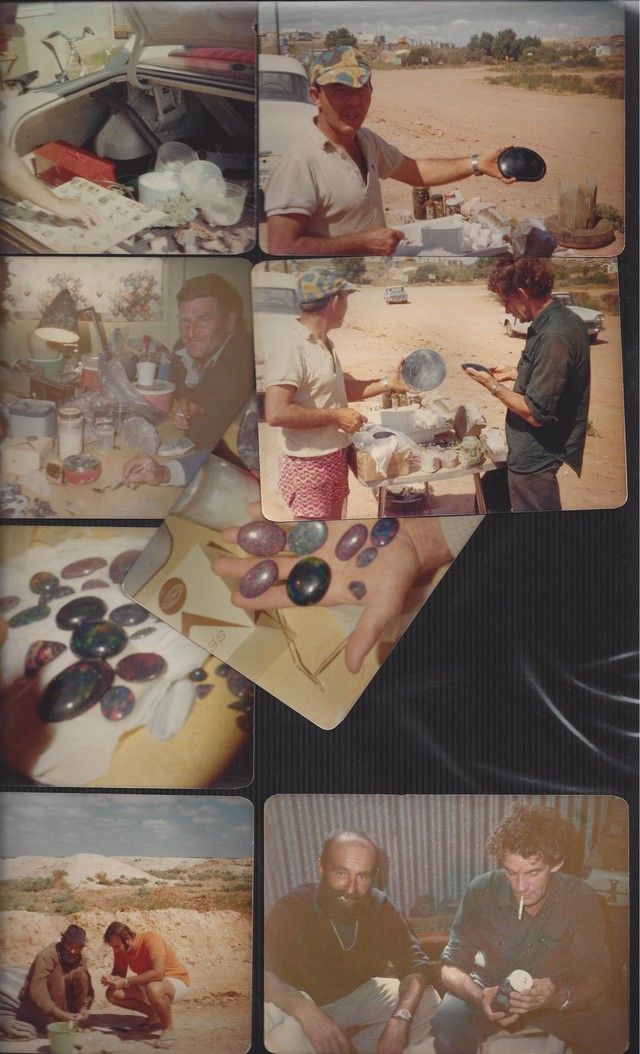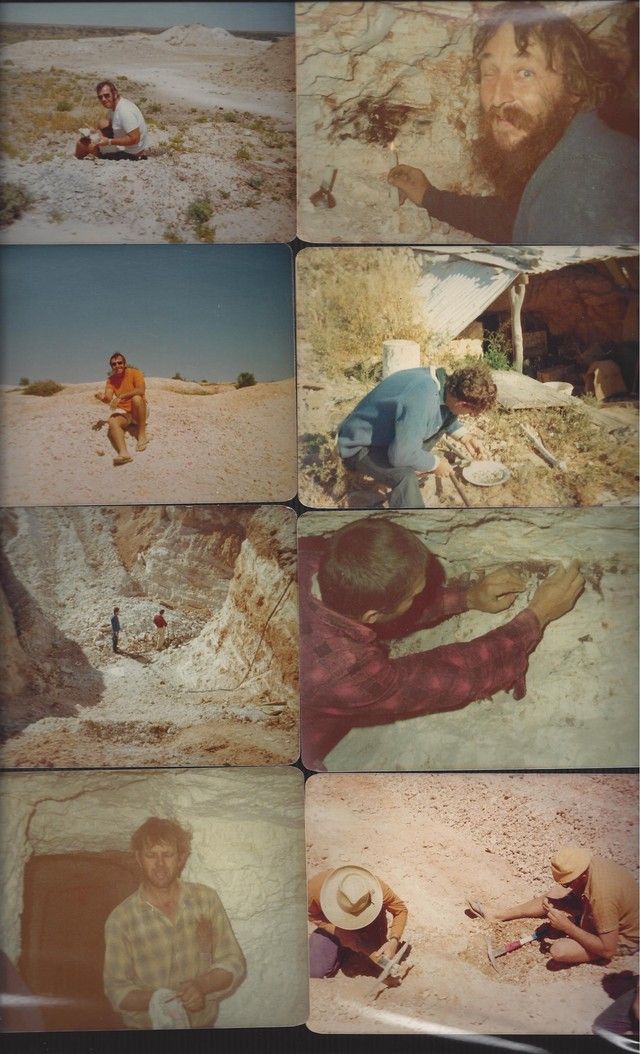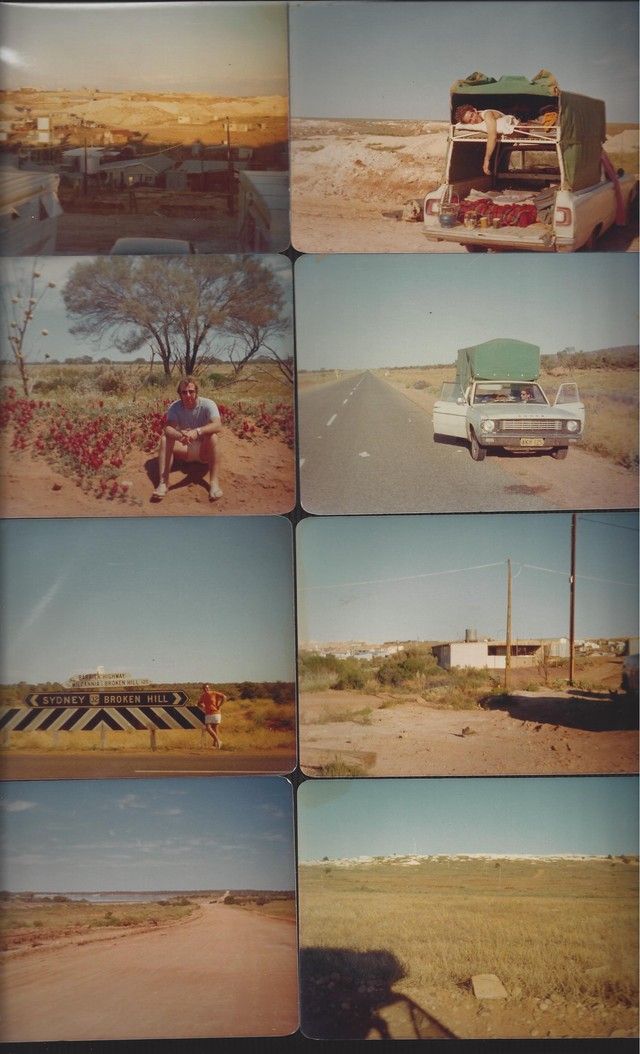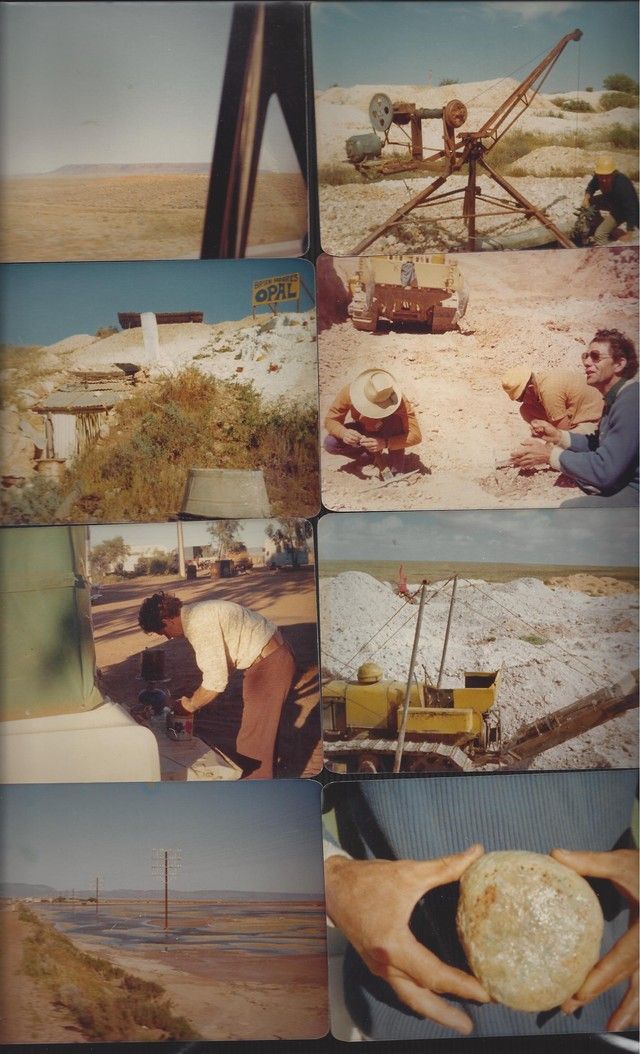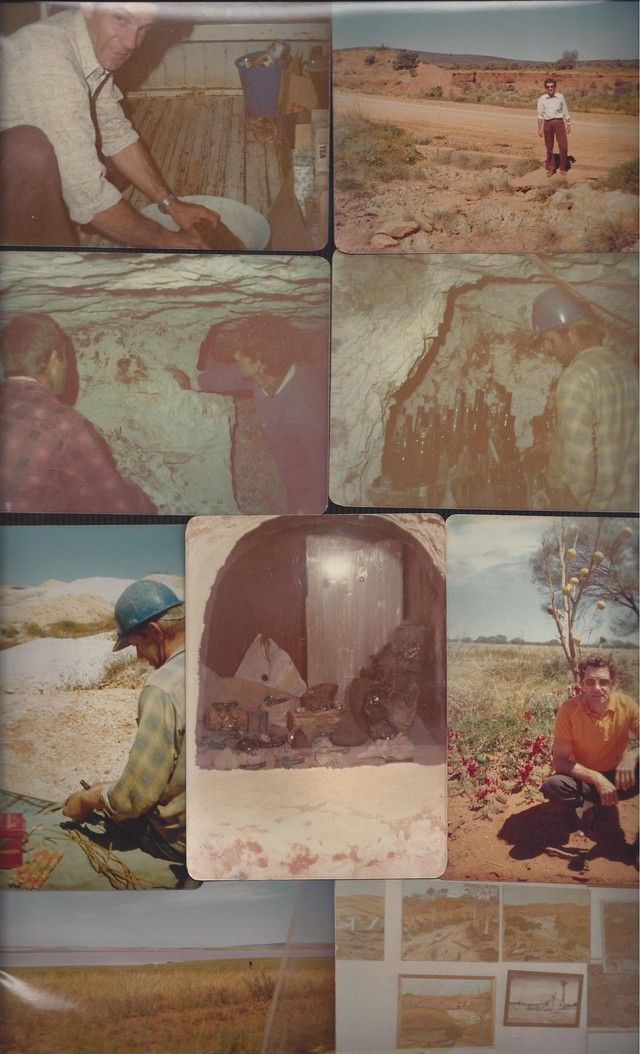Postby Kookielee » Fri Dec 19, 2008 4:52 am
While looking for photos of a true harlequin, I ran across these little tidbits at:
http://www.gemsbrokers.org/gemstone/gem ... _myths.htm
The name opal comes from the Latin « opalus », which in turn is coming from the Greek « opalios », itself coming from the Sanskrit « upala » meaning precious stone.
Archaeologist Louis Leakey found six-thousand year old opal adornments in a cave in Kenya.
The ancient Greeks believed opal could give to the wearer the power of foresight.
The Romans revered opal as the symbol of hope and purity, and believed it could protect from disease. Eastern people regarded it as the symbol of truth. The Ancient Arabs believed it came from heaven, and that it acquired the play of color from flashes of lightning.
In the Middle Ages, opal was thought to be beneficial for eyesight, some people even believed it could render the wearer invisible.
French Emperor Napoleon gave to his wife Josephine an opal called « The Burning of Troy » because of its strong play of colors.
In the nineteenth century, a superstition brought on by the novel « Ann of Geirstein » of Walter Scott, in which opal is described an unlucky stone, eclipse temporarily opal’s popularity. But public figures such as Queen Victoria as well as the French actress Sarah Bernhardt did reestablish the gem’s popularity.
Re: A Little Opal History
Postby PinkDiamond » Fri Oct 16, 2009 4:47 am
Love the history of opal, Janice!
Here's another good one with beautiful pics:
October Birthstone - Opal:The Deleuse Jewelers Blog
"Is it true that if you wear the gemstone Opal when it’s not your birthstone you’ll have bad luck? Apparently not, the fiery flash of colors in the gemstone opal has been revered by people since the ancient times. Shakespeare referred to opal as ‘the queen of gems” in the Twelfth Night. Sir Walter Scott wrote the novel Anne of Geierstein in which the opal was worn by a beautiful woman who believed that her moods and chance of luck were affected by her opals, obviously blaming the opal for her ill fortune. The lore of the opal was linked to tragedy causing great superstition attached to the beautiful gem.
Treasured by the Romans, opals were held in high esteem and worn by the wealthy in the form of rings and intaglios as a symbol of love, hope and purity. The Arabs believed that the opals fell from the sky during lightening storms. The aborigines of Australia formed negative idea about the gems. Found in the deep earth, they believed that opals were “half human and half serpent that lurks in a hole in the ground ready to lure men to destruction with flashes of colorful magic." The word “precious stone” in Latin is ‘opalus and in Sanskrit ‘upala’ hence the name Opal. Pliny writes: ”In opal you will see red fire, the glorious purple of amethyst, and the sea green of the emerald, and all these colors glittering together in incredible union.”..."
http://www.deleusejewelers.com/DeleuseB ... 0&blogId=1
Re: A Little Opal History
Postby NovaScotiaCreations » Sat Jul 31, 2010 3:11 pm
Here's some interesting history I ran across on the net, some of it is already mentioned here, so I hope it's ok that I post this.
I think it's unanimous that most people want Sir Walter Scott shot...lol:
Opal has been treasured throughout history from the early Aztecs and Romans to Queen Victoria, who loved opals so much that she gave them away as wedding presents. They have adorned the crowns of the Holy Roman Emperor, and are set in the crown jewels of France. Josephine was given an opal with brilliant red flashes called “The Burning of Troy" by Napoleon. Roman historian Pliny described the beauty of opals as the combination of the beauty of all gems.
“Natures Fireworks" and “The Queen of Gems" are some of the superlatives that have been used to describe opal. The word itself – “opal" – may have several origins and differing suggestions as to its first use: One is that it comes from a Sanskrit word “upala," simply meaning “precious stone." Another is that the Romans knew it by different names – “opthalmus," from the Greek word for “eye," and “paederes," meaning both “child and “favourite." Whatever the actual name origin opal has been a favoured, valued stone throughout a long period of history.
The Australian Aboriginals believe that they have lived in Australia since the Dreamtime, the beginning of all creation. Over time, their culture has produced a rich variety of mythologies in hundreds of different languages. To the Aborigines, opals, like other minerals, have a spiritual value because they represent something a Dreaming ancestor left behind as a sign of their presence. The aboriginal Wangkumara tribe recount a legend of how their people gained fire from opal stones, with the assistance of a Muda – a creator who switches from human form to pelican:
Long, long ago the Wangkumara people decided to send a pelican (Muda) to explore the Northern Territory, so he could return and tell them what was there. After a time, while still in Queensland, the pelican felt ill and landed on top of a hill. While resting, the pelican observed the ground beneath him, amazed by its magnificent array of colours. Being curious he began to peck at the coloured stones with his beak. Suddenly, a spark flew out and lit dry grass nearby. The flames rose and spread across long distances, approaching a group of Wangkumara who were camped near by. The people were able to cook their meat and fish for the first time, grateful for this new gift brought by these precious stones.
Throughout history, early cultures credited opal with magical properties, believing it to possess the healing properties of all the gemstones, due to its multitude of colours.
The ancient Greeks believed the opal gave the wearer protection from disease and was a sought after gem for its gift of prophecy and foresight. Greek astrologers, mediums and soothsayers also used the stone for divination. As well as its mystical significance and psychic vision properties, opal was also thought to aid in digestion, stomach disorder, and to cure all disease associated with the eyes. It was believed that when a person was to suffer a minor illness, the stone became dull and grey it would turn a sickly yellow when an injury or accident was about to occur.
Superstitions associated with opal continued throughout the Middle Ages, when opal was widely believed to be beneficial to eyesight, while others thought wearing opal would render the wearer invisible to the eye. It was for this reason thieves held opal in such high regard, using it as their symbol, due to this superstition. Blond haired women wore necklaces of opal to protect their hair from loosing its colour, while opal amulets were worn to attract happiness, love, good fortune and favour.
In the 19th century, opal was considered unlucky in Europe, due to the plot of a popular novel of the time written by Sir Walter Scott, while in Asia it has always been considered to bring loyalty and hope to the wearer.
Re: A Little Opal History
Postby gingerkid » Thu Aug 05, 2010 5:26 am
pretty 8) , novascotiacreations, i was not familiar with the legend of muda. 8)
i found this today while searching for information on 'brazilian blue "fire" opal.'
"The Mayas and Aztecs loved this (fire opal) gemstone and liked to use it in mosaics and for ritualistic purposes. They called it quetzalitzlipyollitli, the ‘stone of the bird of paradise." (try saying "quetzalitzlipyollitli" three times fast
“Numerous legends and tales surround this colourful gemstone, which can be traced back in its origins to a time long before our memory, to the ancient dream time of the Australian aborigines. It is reported in their legends that the creator came down to Earth on a rainbow, in order to bring the message of peace to all the humans. And at the very spot, where his foot touched the ground, the stones became alive and started sparkling in all the colours of the rainbow. That was the birth of the Opals."
source: http://vibrate.wordpress.com/2007/08/19/fire-opal/
Re: A Little Opal History
Postby brightlights » Thu Nov 18, 2010 2:29 am
Kookielee wrote:
Archaeologist Louis Leakey found six-thousand year old opal adornments in a cave in Kenya.
Hmmm...Months ago when I read that, I've wondered and wondered about it. I searched and found no other references. So I actually emailed a few folks at the Kenya museum and was ignored. It seems Louis Leakey made many great archaeology discoveries but I could not verify this necklace as opal. FINALLY I had a moment the other day. (I couldn't find access to his paper online but I'm sure the collage level access would have it available, but I'm stuck with Google and long nights of insomnia.
Again, I found this while Reading "Opal - The Phenomenal Gemstone" Pg 8: Fact & Fiction The Leakey prehistoric Opal Find. I'll summary it:
The report came in newspapers about a find in 1938. He did not actually find it, but was invited by Nellie Grant to come look at the find and excavate it. It seems that Louis wasn't very well versed in geology, so when he saw blue and green stones he made an assumption that it was opal, but no opal or evidence of opal was found. Also dating came back as 960B.C. so it was not as old as originally reported. The final report for the beads came back as a variety of material including feldspar and quartz. Nothing was made of opal. The story perpetuates because that is what the media reported at the time. (Kinda like today...) But when he actually published his work on the Njoro River Cave with the accurate information, the media attention had already changed to other topics and it was ignored. That passage includes 2 pictures of the beads and a reconstructed necklace. There is more, but I'll leave that for you to read.
Finally, that little distraction can be put to rest (at least for me and my brain.)
e: A Little Opal History
Postby SwordfishMining » Sun Nov 21, 2010 7:25 am
Appetite
Re: A Little Opal History
Postby Opalologyst » Fri Sep 16, 2011 9:05 am
Opal History? Authors of books or stories and articles can make mistakes. I know one such mistake that involves well known author of opal books of historic value. He takes a photo of historic opal mine in Queensland and thinking it was a 'The Pride of the Hills'? In fact it is 'Lashington Mines'. I have told him of wrong doing, but he will not admit. Mines Department also told him that he made mistake naming it wrongly! When I was researching for my opal book 'Rediscover Opals In Australia', page 276. Opal miner from Duck Creek that had a Lease over it give me a permission to put it in the book and we tracked it using GPS to locate it, after failing by using a mud map given by the owner of the mine. This is how history can be wrongly written!
'The Pride of the Hills' was named, because it is surround by beautiful hills, as for 'Lashington Mines' is not.
Cheers
Opalologyst
Re: A Little Opal History
Postby Opalologyst » Fri Sep 16, 2011 9:07 am
Opal History? Authors of books or stories and articles can make mistakes. I know one such mistake that involves well known author of opal books of historic value. He takes a photo of historic opal mine in Queensland and thinking it was a 'The Pride of the Hills'? In fact it is 'Lashington Mines'. I have told him of wrong doing, but he will not admit. Mines Department also told him that he made mistake naming it wrongly! When I was researching for my opal book 'Rediscover Opals In Australia', page 276. Opal miner from Duck Creek that had a Lease over it give me a permission to put it in the book and we tracked it using GPS to locate it, after failing by using a mud map given by the owner of the mine. This is how history can be wrongly written!
'The Pride of the Hills' was named, because it is surround by beautiful hills, as for 'Lashington Mines' is not.
Cheers
Opalologyst
Re: A Little Opal History
Postby PinkDiamond » Sat Dec 03, 2011 9:52 am
John, I just adore your avatar!
